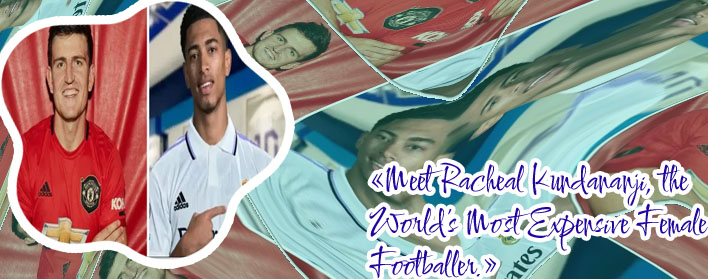World's most expensive footballer

With football transfer fees skyrocketing in recent years, the quest to become the world's most expensive footballer has become a highly coveted title among top players and clubs. In this list of three articles, we delve into the intricate details of the world's most expensive football transfers, the impact of transfer fees on the sport, and the rise of new football superstars commanding record-breaking transfer fees.
The Evolution of Transfer Fees: From Maradona to Mbappe

In the world of football, transfer fees have become a hot topic of discussion, especially with the staggering amounts involved in recent years. From legends like Diego Maradona to rising stars like Kylian Mbappe, the evolution of transfer fees has been nothing short of remarkable.
Back in the day, Maradona made headlines when he became the world's most expensive player with his move to Barcelona in the early 1980s. Fast forward to the present, and we see Mbappe breaking records with his transfer to Paris Saint-Germain for a whopping amount. The trend of skyrocketing transfer fees only seems to be continuing, with clubs willing to pay top dollar for top talent.
This evolution can be attributed to various factors, including the globalization of the sport, the influx of money from TV rights and sponsorships, and the increased competition among clubs to secure the best players. While some argue that these exorbitant transfer fees are distorting the market and harming the sport, others see it as a sign of the game's growing popularity and financial success.
In conclusion, the evolution of transfer fees in football is a fascinating phenomenon that reflects the ever-changing landscape of the sport. It raises important questions about the future of football and the impact of money on the game. This article
Understanding the Economics Behind the World's Most Expensive Football Transfers
In the world of football, big money moves are nothing new, but understanding the economic factors behind these eye-watering transfers sheds light on the business side of the beautiful game. The staggering amounts paid for top players like Neymar, Kylian Mbappe, and Cristiano Ronaldo are not just arbitrary figures, but the result of complex financial considerations.
These astronomical transfer fees are influenced by a variety of factors, including player performance, contract length, age, market demand, and financial fair play regulations. Clubs are willing to break the bank for superstar players who can bring success on the pitch and generate revenue off it through merchandise sales, ticket sales, and sponsorships.
The global appeal of football means that clubs are not just competing on the field, but in the boardroom as well. Understanding the economics behind these mega transfers provides insight into the competitive nature of the football industry and the lengths clubs will go to secure top talent.
In conclusion, delving into the economics behind the world's most expensive football transfers offers a fascinating glimpse into the high-stakes world of professional football. This article is essential for anyone interested in gaining a deeper understanding of the financial dynamics driving the sport's top transactions.
Breaking Down the Factors Influencing Record-breaking Transfer Fees
The recent surge in record-breaking transfer fees in the world of football has sparked debate and fascination among fans and experts alike. The astronomical sums involved in player transfers have raised questions about what factors are driving these unprecedented prices.
Several key factors can influence record-breaking transfer fees in football. One of the primary factors is the growing financial power of top clubs, fueled by lucrative TV deals, sponsorship agreements, and wealthy owners. As clubs amass greater resources, they are more willing to splurge on high-priced players to enhance their chances of success on the field.
Another factor contributing to record-breaking transfer fees is the scarcity of top-tier talent. With competition for the best players intensifying, clubs are willing to pay premium prices to secure the services of elite athletes who can make a difference on the pitch.
Furthermore, the influence of agents and intermediaries cannot be overlooked in the transfer market. These individuals play a pivotal role in negotiating deals and maximizing their clients' earning potential, often driving up transfer fees in the process.
In conclusion, the factors influencing record-breaking transfer fees in football are complex and multi-faceted. To better understand this phenomenon, it is important to consider the financial strength of clubs, the scarcity of top talent, and the role of agents in shaping the transfer market.